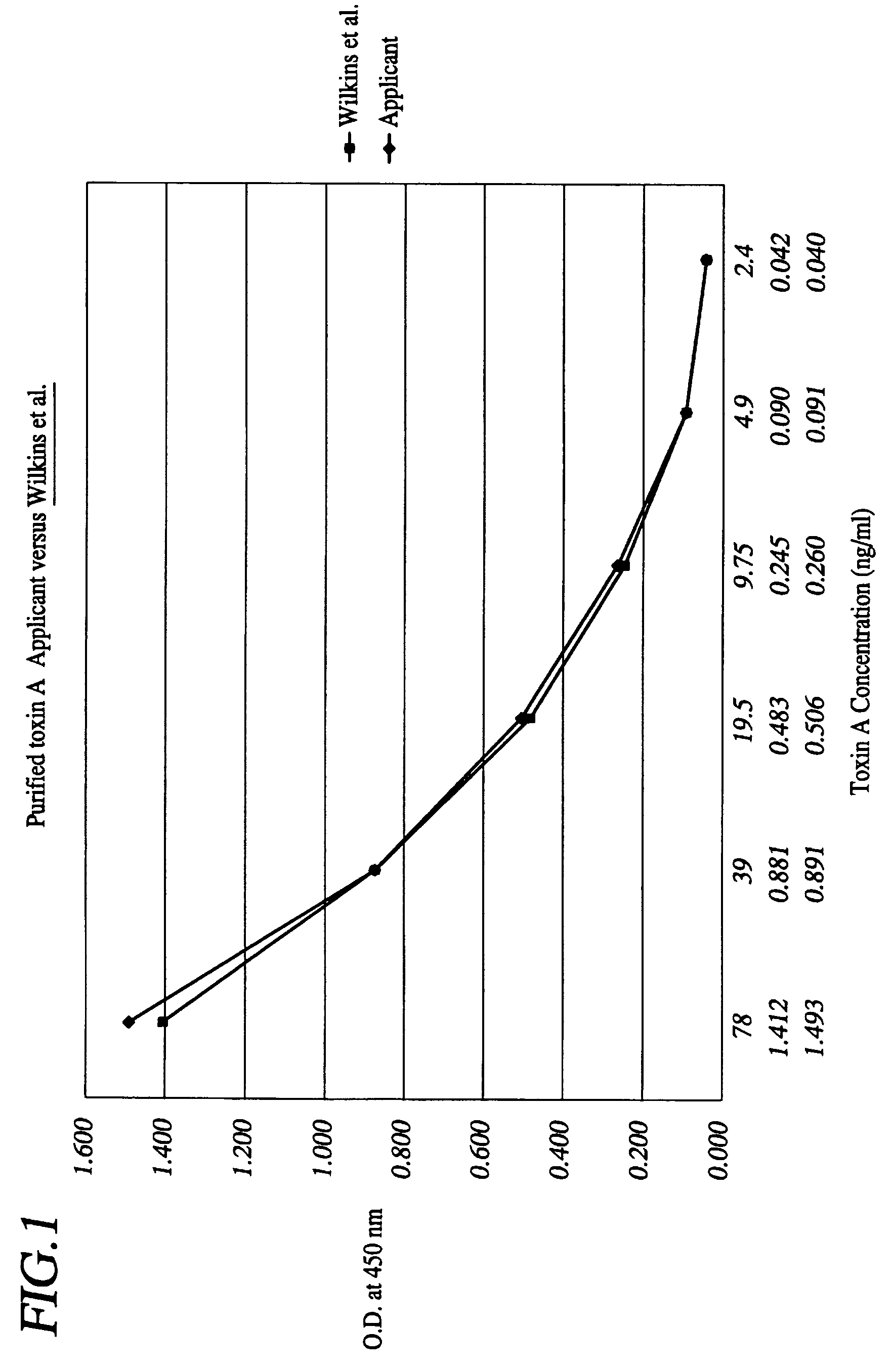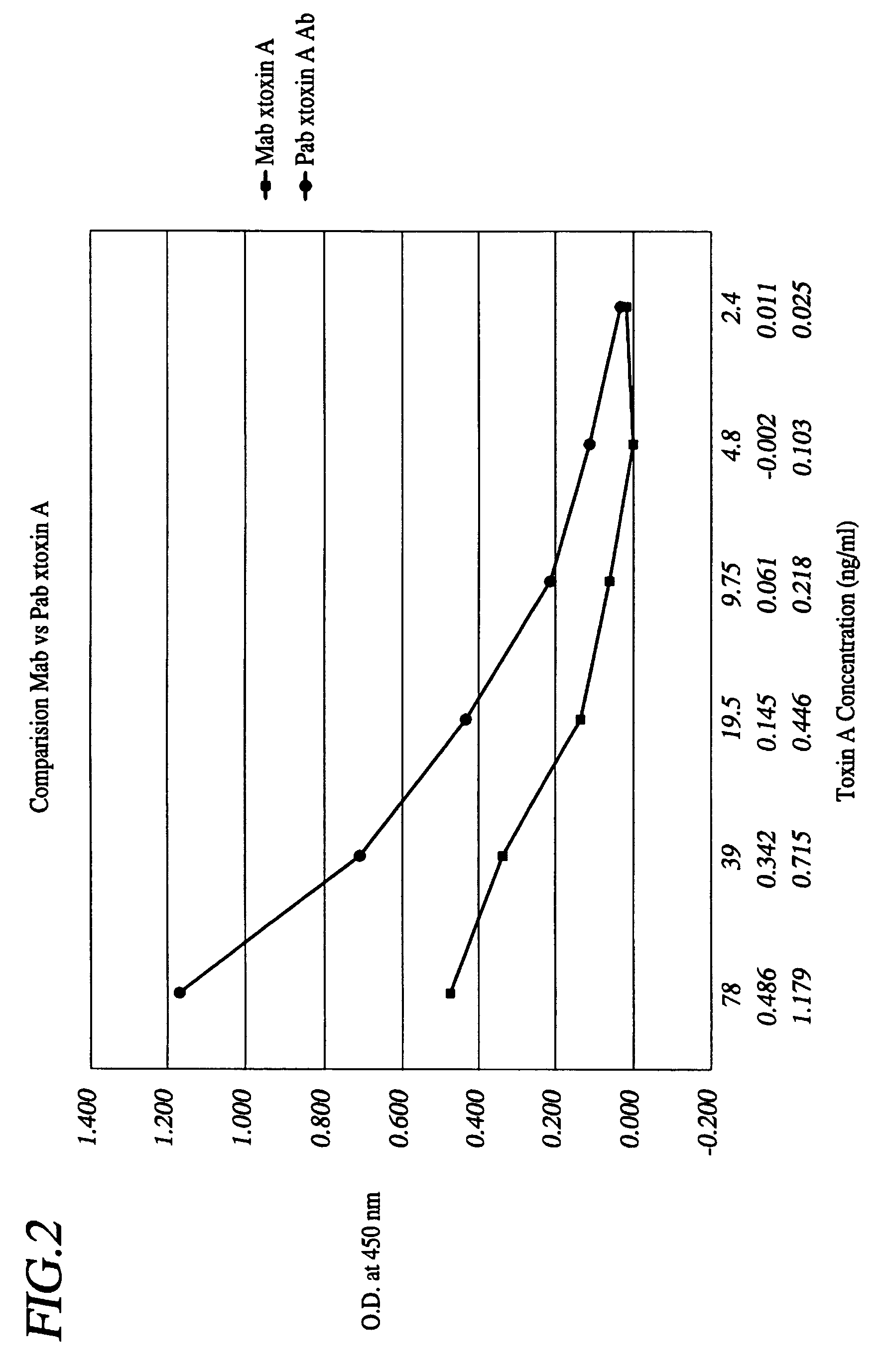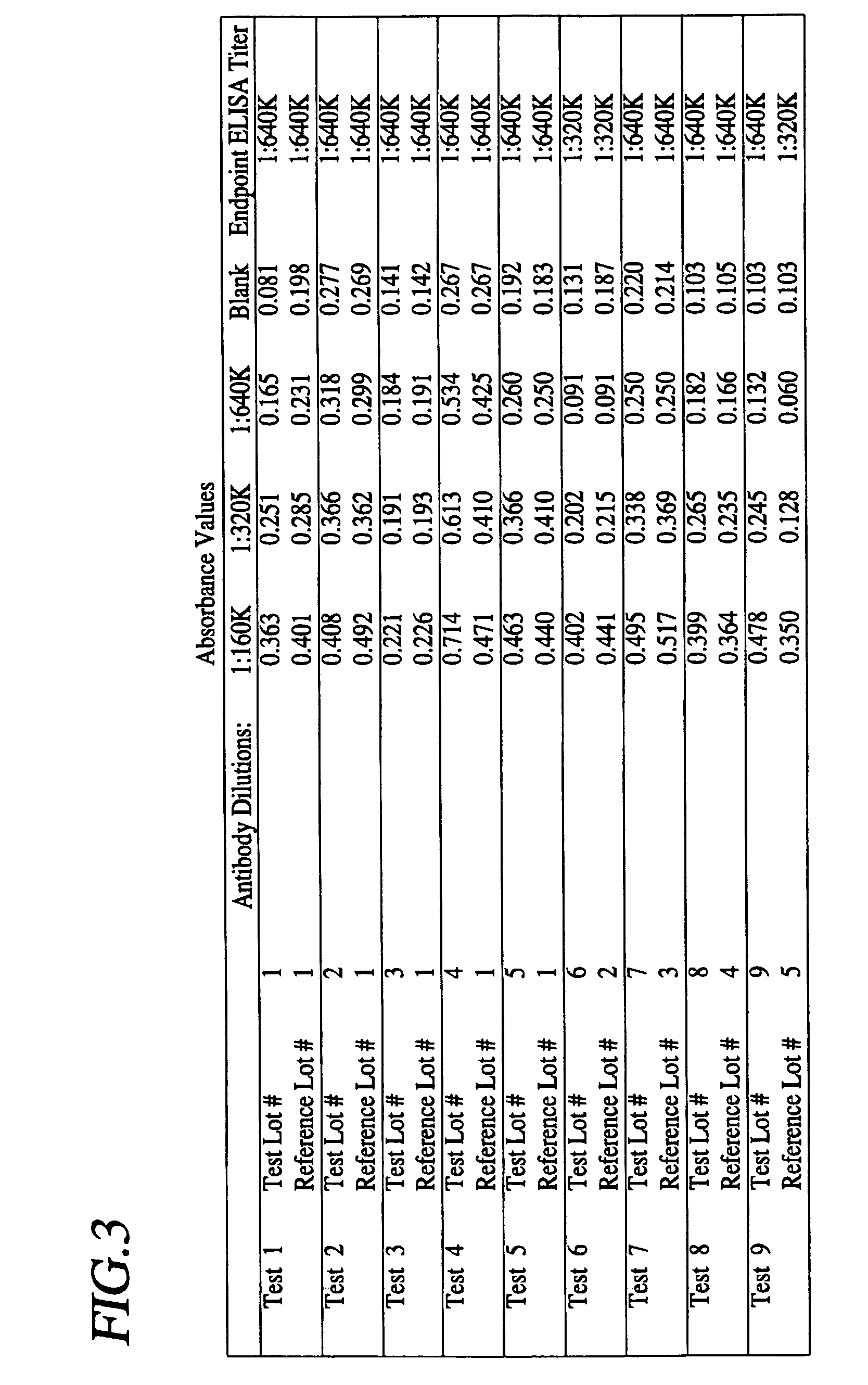Mono-specific polyclonal antibodies and methods for detecting Clostridium difficile Toxin A
a technology of clostridium difficile and monoclonal antibodies, which is applied in the field of purification of clostridium difficile toxin a, can solve the problems of inability to detect toxin well, disadvantages of non-pathogenic i>c. difficile interference, and extensive damage to the gut mucosa, and achieves high sensitivity for toxin
- Summary
- Abstract
- Description
- Claims
- Application Information
AI Technical Summary
Benefits of technology
Problems solved by technology
Method used
Image
Examples
Embodiment Construction
[0018]Compositions and methods for the detection of pseudomembranous colitis caused by C. difficile are provided. Specifically, a new method for purification and production of Toxin A is disclosed. Further, polyclonal antibodies are provided which are specific for Toxin A of C. difficile. The antibodies find use in assays for the detection and diagnosis of C. difficile.
DEFINITIONS
[0019]The term “substantially pure” or “purified Toxin A” as used herein indicates that the Toxin A preparation is substantially free of contaminating substances when examined by resolving techniques known in the art.
[0020]The term “partially pure” or “partially purified Toxin A” refers to Toxin A preparations having some, but not all, contaminants removed.
[0021]The term “active Toxin A” refers to Toxin A which gives a positive result on Toxin A assays currently used in the field including ELISA's and the Latex Agglutination Test which uses purified rabbit anti-C. difficile antibody immobilized onto Latex ...
PUM
| Property | Measurement | Unit |
|---|---|---|
| pH | aaaaa | aaaaa |
| concentration | aaaaa | aaaaa |
| pH | aaaaa | aaaaa |
Abstract
Description
Claims
Application Information
 Login to View More
Login to View More - R&D
- Intellectual Property
- Life Sciences
- Materials
- Tech Scout
- Unparalleled Data Quality
- Higher Quality Content
- 60% Fewer Hallucinations
Browse by: Latest US Patents, China's latest patents, Technical Efficacy Thesaurus, Application Domain, Technology Topic, Popular Technical Reports.
© 2025 PatSnap. All rights reserved.Legal|Privacy policy|Modern Slavery Act Transparency Statement|Sitemap|About US| Contact US: help@patsnap.com



